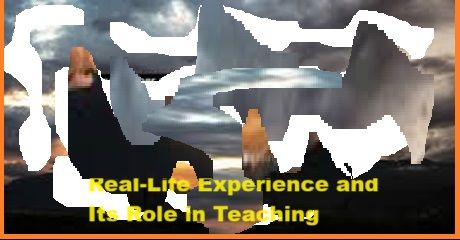Real-Life Experience and Its Role in Teaching: Bridging Theory with Practice in the realm of education, the dichotomy between theory and practice has long been a subject of debate. Theoretical knowledge, gained through textbooks and lectures, often forms the foundation of learning. However….
Real-Life Experience and Its Role in Teaching in the realm of education, the dichotomy between theory and practice has long been a subject of debate. Theoretical knowledge, gained through textbooks and lectures, often forms the foundation of learning. However, it is the application of this knowledge in real-life situations that truly enriches understanding and prepares individuals for the complexities of the world beyond the classroom. This article explores the significance of real-life experience in teaching, highlighting its benefits, challenges, and the strategies educators can employ to effectively integrate experiential learning into their pedagogical approaches.

The Importance of Real-Life Experience
Real-life experiences encompass a wide range of activities that take learning outside traditional academic settings. These experiences can include internships, fieldwork, simulations, community service, and collaborative projects. Unlike classroom-based learning, which primarily focuses on theoretical concepts, real-life experiences provide students with opportunities to apply their knowledge in practical contexts. This application is crucial for several reasons:
- Enhanced Understanding: When students encounter real-world challenges, they gain a deeper understanding of how theoretical concepts translate into practical solutions. This hands-on approach fosters critical thinking and problem-solving skills.
- Skill Development: Real-life experiences often require students to develop skills such as communication, teamwork, and adaptability—skills that are essential for success in both academic and professional settings.
- Personal Growth: Engaging in real-life experiences can also promote personal growth by building confidence, resilience, and a sense of responsibility. Students learn to navigate unfamiliar situations and gain insights into their own strengths and weaknesses.
- Relevance: Learning becomes more meaningful when students can relate theoretical knowledge to real-world applications. This relevance not only enhances motivation but also encourages lifelong learning beyond formal education.
Challenges in Integrating Real-Life Experience
Despite its benefits, integrating real-life experience into teaching presents several challenges:
- Logistical Constraints: Organizing meaningful experiences outside the classroom can be logistically complex and resource-intensive. Factors such as transportation, safety, and scheduling need careful consideration.
- Assessment: Assessing learning outcomes from real-life experiences can be subjective and challenging. Educators must develop clear criteria and methods for evaluating students’ performance in diverse settings.
- Equity and Access: Not all students have equal access to real-life experiences, especially those from disadvantaged backgrounds. Addressing these disparities requires innovative approaches to ensure inclusive educational opportunities.
Strategies for Effective Integration
To overcome these challenges and maximize the benefits of real-life experiences, educators can implement the following strategies:
- Curriculum Design: Integrate real-life experiences into the curriculum through structured assignments, projects, or modules that align with learning objectives.
- Partnerships: Collaborate with community organizations, businesses, and institutions to provide diverse and meaningful opportunities for students to engage with real-world issues.
- Reflection and Debriefing: Incorporate structured reflection exercises to help students process their experiences, connect them to theoretical concepts, and identify lessons learned.
- Technology: Utilize technology to facilitate virtual simulations, online collaborations, and interactive case studies that simulate real-world scenarios.
Case Study: Experiential Learning in Practice
At real life University, the Business School has successfully integrated real-life experiences into its curriculum through a mandatory internship program. Parsons are required to complete a semester-long internship with local businesses, where they apply classroom knowledge to real-world challenges. Through structured reflection sessions and mentorship, students not only enhance their academic learning but also develop professional skills and networks.
Conclusion
In conclusion, real-life experiences play a crucial role in bridging the gap between theory and practice in education. By providing opportunities for application, skill development, and personal growth, these experiences enrich learning and prepare students for future challenges. While challenges such as logistical constraints and equity issues exist, effective integration strategies can help educators harness the full potential of experiential learning. By embracing a holistic approach that combines theoretical knowledge with practical application, educators can empower students to become lifelong learners and adaptable professionals in an increasingly complex world.

5 thoughts on “Real-Life Experience and Its Role in Teaching”